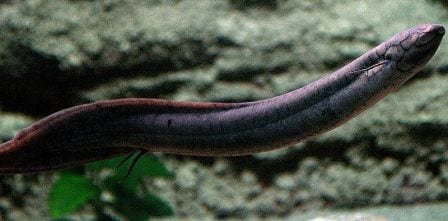Specimen of the Week: Week Eighty
By Emma-Louise Nicholls, on 22 April 2013
 Yesterday I ran the London Marathon. Today, I cannot walk properly. I’m hobbling around like an old lady who put her zimmer frame in a ‘safe place’ and promptly forgot where that might be. I should explain that I was absolutely unable to do any training due to circumstances completely beyond my control, and it was not in the slightest bit down to the fact that I just never got around to it. That would be ludicrously silly, and being a biologist, I’d never be that naive about my body’s capabilities. Errrr…, yeah. Still, despite the aching thighs, a couple of blisters and a knee that I suspect will never get me down another flight of stairs again, I raised money for charity and got a shiny medal- yay. Wandering (slowly) (and painfully) around the Museum this morning to choose my Specimen of the Week, it got me thinking about how incredible the vertebrate body is, and how we have evolved to be able to undertake outrageous activities such as the London Marathon. I therefore decided to take you back to our roots, and talk about a very primitive species indeed, a sort of ‘where it all began’… if you like. This week’s Specimen of the Week is…
Yesterday I ran the London Marathon. Today, I cannot walk properly. I’m hobbling around like an old lady who put her zimmer frame in a ‘safe place’ and promptly forgot where that might be. I should explain that I was absolutely unable to do any training due to circumstances completely beyond my control, and it was not in the slightest bit down to the fact that I just never got around to it. That would be ludicrously silly, and being a biologist, I’d never be that naive about my body’s capabilities. Errrr…, yeah. Still, despite the aching thighs, a couple of blisters and a knee that I suspect will never get me down another flight of stairs again, I raised money for charity and got a shiny medal- yay. Wandering (slowly) (and painfully) around the Museum this morning to choose my Specimen of the Week, it got me thinking about how incredible the vertebrate body is, and how we have evolved to be able to undertake outrageous activities such as the London Marathon. I therefore decided to take you back to our roots, and talk about a very primitive species indeed, a sort of ‘where it all began’… if you like. This week’s Specimen of the Week is…
**The African Lungfish**
1) Fishes (fishes not fish because I am referring to multiple species) are split into ray-finned fishes and lobe-finned fishes. Names which pretty much do as they say on the tin, so I shall explain no further. Lungfish are a type of lobe-finned fish. They are super cool as they are ‘survivors’ as it were, of a very ancient group of fish. being a palaeontologist, that impresses me.
2) The ancestors of the lungfish include the first vertebrates that decided they’d had enough of water and thought that they’d try their fin at flopping about on land, and as we know, they made a good go of it. From these early fishes, came tetrapods (vertebrates with four limbs, i.e. not fish, as fins are not considered limbs… plus most fish have more than four fins) which as you can see, did pretty well.
3) There are two modern families of lungfish; the Australian lungfish (or Ceratodidaem, if you want to be fancy) and the South American and African lungfishes (the Lepidosirenidae, which is my favourite sounding genus… of lungfish). Lungfish are named as such because, unlike most fish who get oxygen by passing water through their gills, lungfish can actually breath air. An impressed ‘Wooooo’ please. They do have gills, but in a wartime-esque belt and braces effort to overcome the odds, they also have lungs similar to those found in primitive amphibians. These lungs comprise an area of the gut containing numerous thin-walled blood vessels that make it possible to take oxygen into the blood, just like a lung.
4) Lungfish are predators, so I like them. Lungfish do not have a specialised diet meaning they will eat whatever they come across, so long as it fits in their mouth. Much like myself. Mostly though, they go for other fish and frogs. Unlike myself.
5) African lungfish live in both swamps and small rivers in West and southern Africa. These environments have a niggling habit of inconveniently drying up from time to time. African lungfish have therefore developed a super technique for surviving in very little water. They will dig a hole in the mud (impressive enough if all you are equipped with is fins) which they cover with a layer of mucus (a bit gross, but whatever). The fish can then stay there until the water levels rise again. Their metabolic rate decreases and they break down muscle tissue to supply their bodies with energy. In this way, lungfish can survive up to FOUR YEARS at a time. I felt that was worthy of capitals.
Emma-Louise Nicholls is the Museum Assistant at the Grant Museum of Zoology
2 Responses to “Specimen of the Week: Week Eighty”
- 1
-
2
The Meaning of (Fossilised) Life | UCL Researchers in Museums wrote on 3 November 2014:

[…] of their appearance (for the Grant is a veritable archive of strangeness, from preserved, etiolated lungfish to the infamously taxonomically confusing stuffed platypus) but by their sheer ancientness. Whereas […]
 Close
Close




[…] From ‘Grant Museum of Zoology’, April 22, 2013 […]